Happy TR-707 Day!
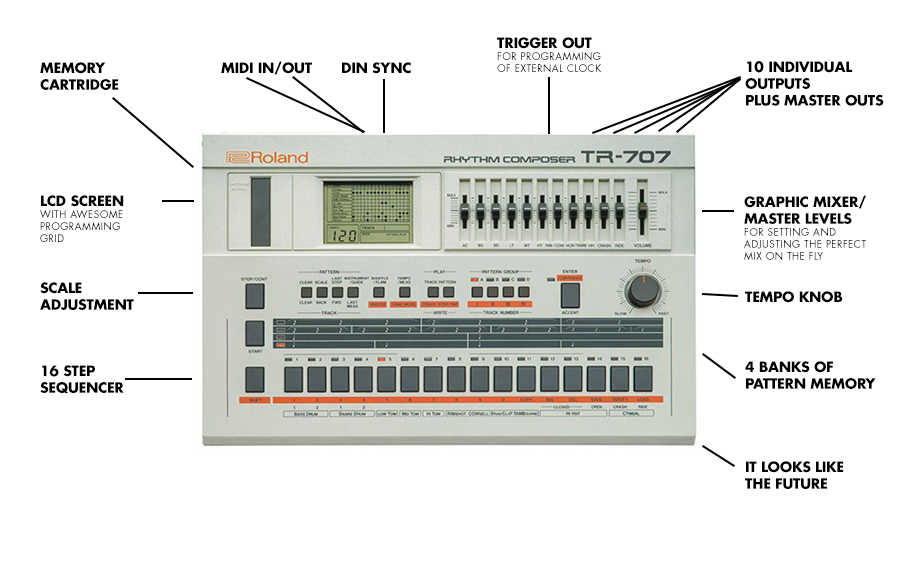
Happy 707 day to my first drum machine ever. The mighty TR-707. Marshall Jefferson’s muse, the side stick that saved my life, the go to clock sequencer for the SH-101 arpeggiator and sequencer, a midi to din sync solution, the precursor to the beat step pro, and an all around underrated device.
It was the 80’s and I wasn’t working well with others. I’d been in bands for years, and we rehearsed and rehearsed and rehearsed and all we ever really got good at was putting on eyeliner and arguing about the name of the band. So I retreated to my room with a pair of headphones and wanted to see what I could find inside myself without needing 11 other people around to heckle my ideas, and add jazz funk bass and a meaningful guitar solo to everything. The Juno-6 was a beautiful keyboard, but I needed some rhythm. So I talked with Eric Sakiaguchi at Guitar Center and he showed me to the TR-707/TR-727 display assuring me that I would be very happy with the realistic and natural sounding results which could be accomplished with the Roland TR-707. He played the demo on the machine for me and we were like “Wow!” because there was an agogo bell, and a big crash at the end of an epic tom roll. I didn’t know anything about drum machines, but now I knew I needed one. So home I went and thus began my journey toward autonomy.
To be really straight with you, the TR-707 isn’t the best drum machine in the world. It’s the first of a long line of pretty terrible sounding 80’s drum machines which sprung up out of the new PCM (sample) technology. It was also the last of the X 0 X style drum machine interfaces that we’d see for quite some time. The 80’s were hard, and the 90’s were even harder. The world got down and dirty with little tiny buttons, a single screen, and a lot of tapping and page turning. The joys of reaching for a slider, pressing a button and seeing everything that was happening right in front of you were gone. The fucking DX7 (which is actually a pretty amazing synthesizer) stepped up and took over the world with the idea that a full face motorcycle helmet and a synthesizer without any knobs or sliders on the face of it (hopefully accented by teal and/or coral) was the future… I think I much preferred Kubrick’s vision of the future to the ideas which emerged in the 80’s.
But I digress: The sound of the 707 is unmistakable. It actually can be equalized, and compressed and effected to produce some pretty good sounds. Featured in so many early house 12″ singles like Time Marches On by the Jungle Wonz (Traxx) or Time Out by Arnold Jarvis (4th Floor) and so many more, the 707 was an affordable machine with all the internal features of a modern midi device, which could be shaped to be useful. It also had a companion – the TR-727 – which featured latin percussion sounds. I dragged those two machines all across the north american continent from 1990 until 2005 and beat the heck out of them with so much love.
But the main thing wasn’t the sounds. Those can be found anywhere, sampled, adjusted and used on any modern machine, or in any software sampler. One way to really get down with the 707 in a modern way is built right into the Roland TR-8 drum machine – Add the 707 sounds to your machine and you get TR-707 and 727 sounds which can be blended and mixed with the 808 and 909 sounds to pre produce the prefect bland of sounds right there in your device. It’s suspicious, I know, but I’ve got one, and it sounds and works great. But the real reason the machine is so amazing is because it can convert midi clock to din sync (so you can run your 303 and/or 606 or 808) It also offers up a rim shot sub output which allows the user to program a clock… I do this a lot… so a clock sends out a 24 ppqn over midi usually, and that’s a lot of pulses per quarter note. The classic arpegiator in a non midi device is looking for something more like 4 pulses. So when you are in a position to place the pulses, and loop them from a programmable drum machine things really begin to get interesting.
EXPERIMENT:
Connect the rim shot output to the sequencer clock input of a Juno-6 or an SH-101 (in modern terms you could connect the rim out of a Roland TR-09 to the external clock or sync input of a Korg Volca Bass or an Arturia MicroBrute) and program a 4×4 beat with the rim shot (should sound like tok, tok, tok, tok and just keep on looping.
Program a kick and a clap and a hat if you like so that the tok tok doesn’t hypnotize you.
Now (on the SH-101) press the arpeggio button and hold a few notes down (or press the sequencer button and play a few keys.) Press PLAY (if you’re using the sequencer) and press HOLD (if you’re using the arpeggiator.)
What should be happening now is that the little series of notes should be playing along with the drums.
On a volca or a minibrute this means that your sequencer pattern is just playing and it’s in sync with the drums.
Now try messing around with the rim shot pattern.
Take them all out apart from the 1. Notice how the notes only play on the 1? So a short pattern of notes is now one note per bar, right?
Add a few more rim shots in wherever you like.
Mess with this. It’s totally inspiring.
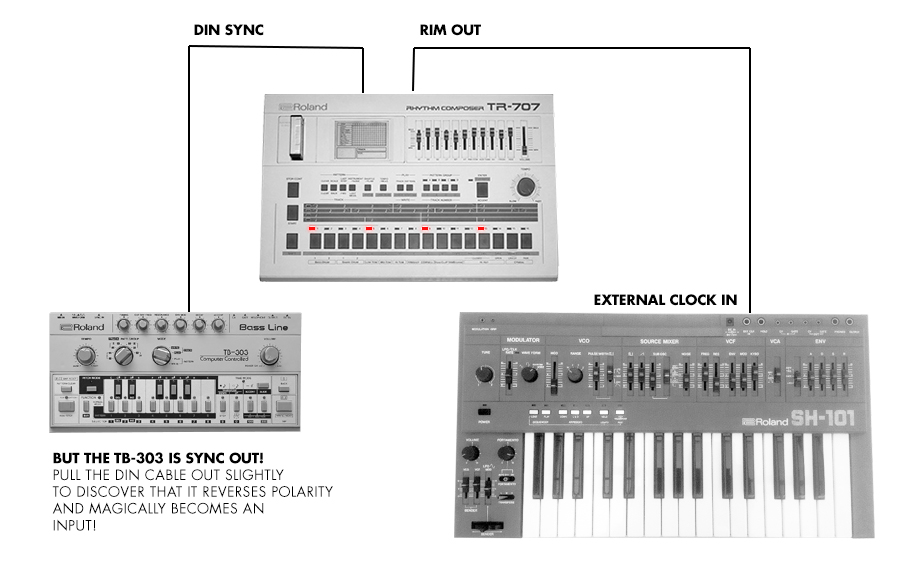
So in addition to being just dope, and working on more than one level, the TR-707 is essentially the very essence of what a modern piece of electronic equipment should be – one knob per function, many functions, adjustable, portable, connectable, and if you’re up for a party you can circuit bend the fuck out of them and really get those sounds to crunch. There’s also a few brilliant people out there who have managed to take the M64C memory cartridge interface and add PROM sound chips to them so you can take a TR-707 and give it Sequential TOM sounds or TR-909 sounds and that’s just the coolest thing ever.
Regardless of my op ed piece here, I wanted to write a little letter to the wonderful TR-707 on July 7th 2017 and to thank Roland for keeping the cream and orange vibe alive.
BETTER STUFF
Here’s a special set of TR-707 Day drum patterns for you. Program them, adjust and mess around with them and make them your own. Download the 707 program grid pdf and make careful notes and explore and enjoy!
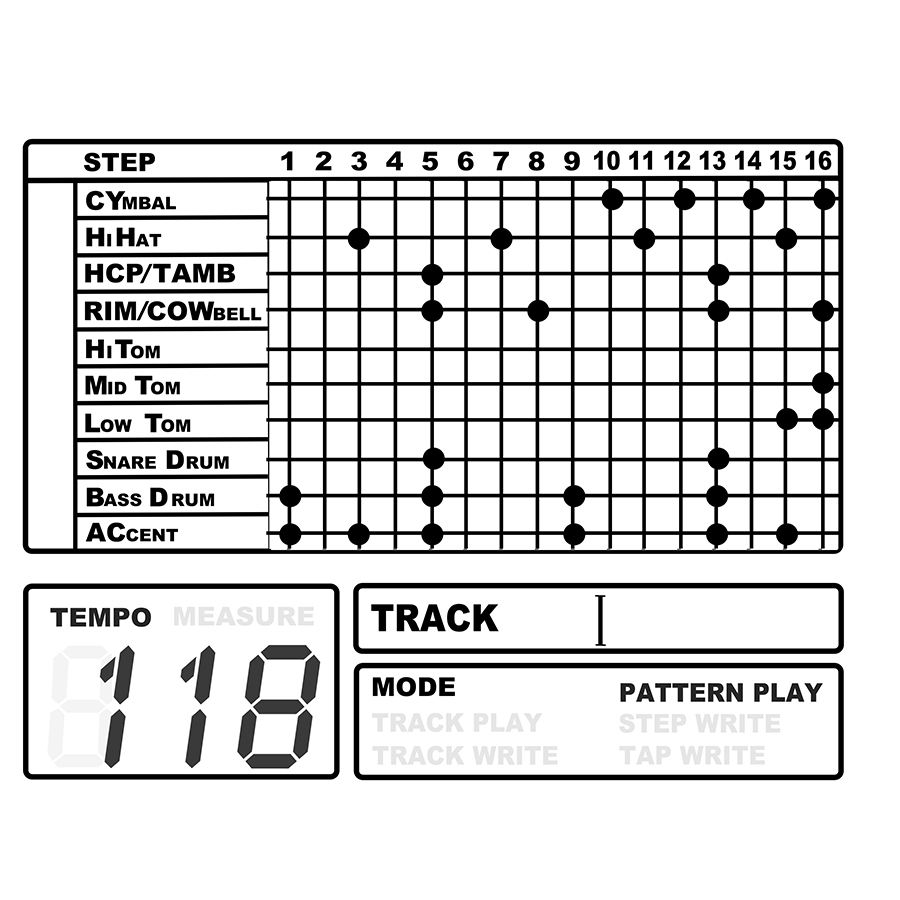
PATTERN 01 – The Beat Pt.1
Listen
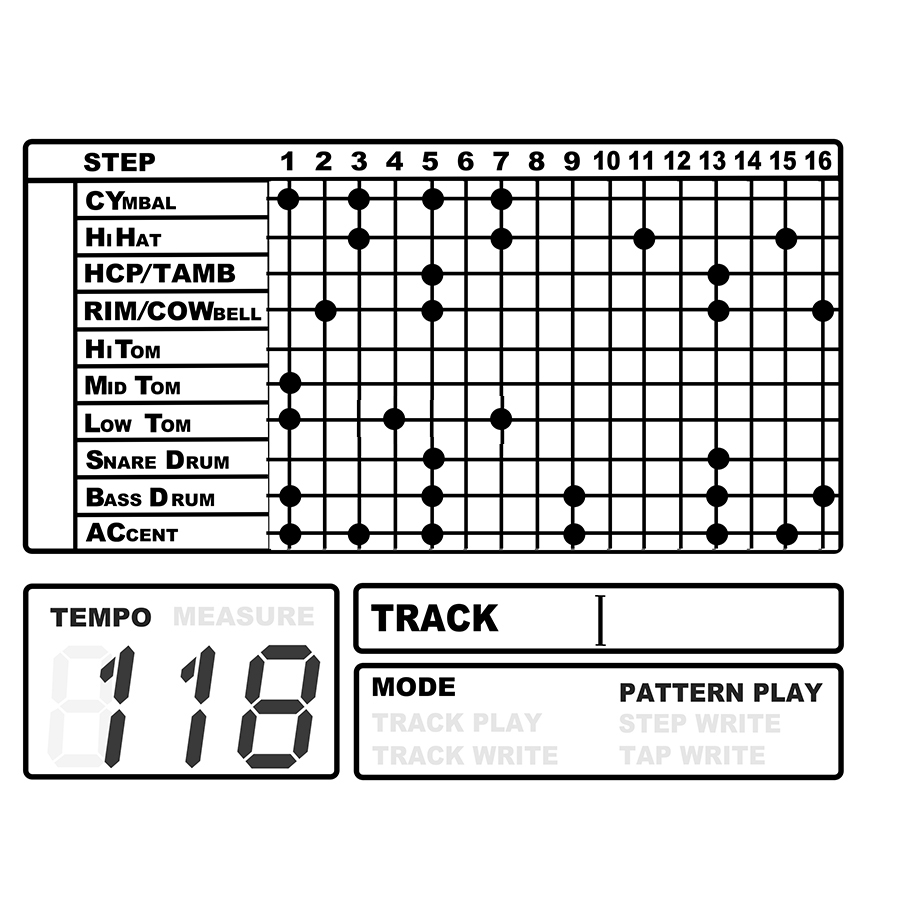
PATTERN 02 – The Beat Pt.2
Listen
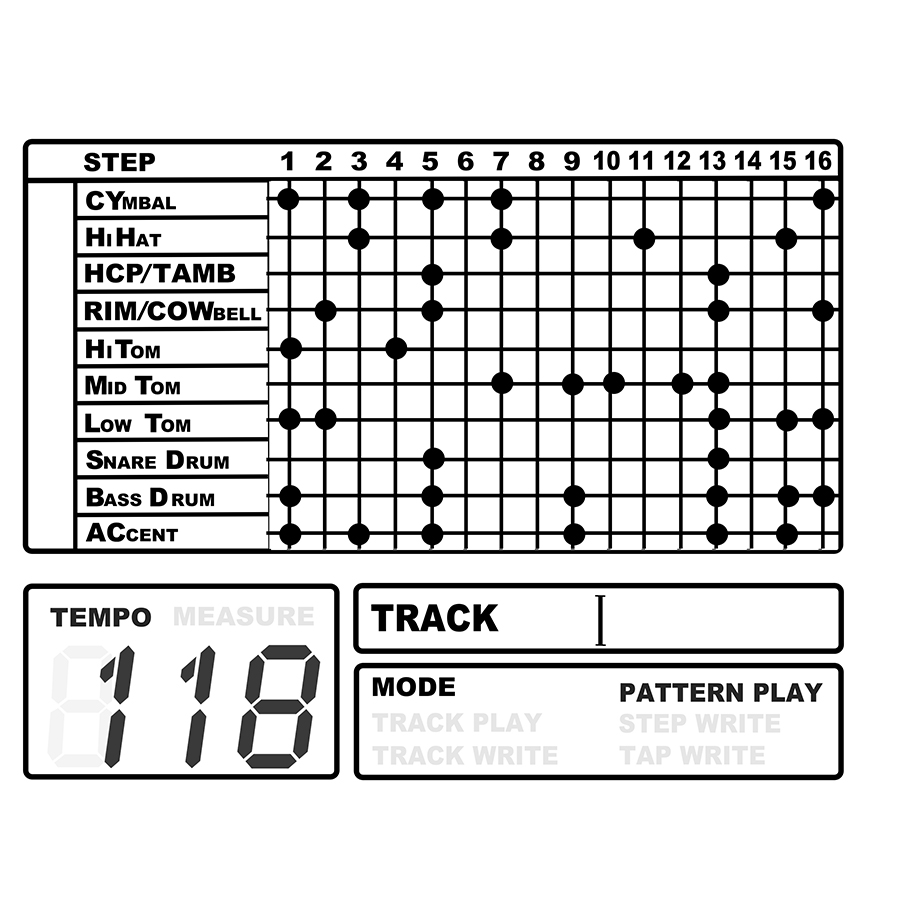
PATTERN 03 – The Big Fill
Listen
Download my handy blank pattern guide pdf right here
The future is yours, and the music is ours. Get down!

12 Comments
Hell yes! Can’t wait to program it up!
Awesome! Just did a whole album with the 707. Great to see that wonderful machine getting some love!
Best toms ever.
I would get books of drum machine patterns from my library and “read” them cover to cover.
I treasure my circuit bent 707
7/7 is also my birthday! Or was yesterday. Ha ha. I got a Roland drum machine bragging rights!
Didn’t even have to see who posted this to know who it was. Great typography btw.
The TR-707 is the master clock to my entire modular rig. Those individual outs trigger my Hexinverter modules.
707’s are the shit! 8)
<3 <3
The 707 -> 101 arpeggiator is one of the greatest inspirational tools. Great article!
The 7:07 Sunrize!!